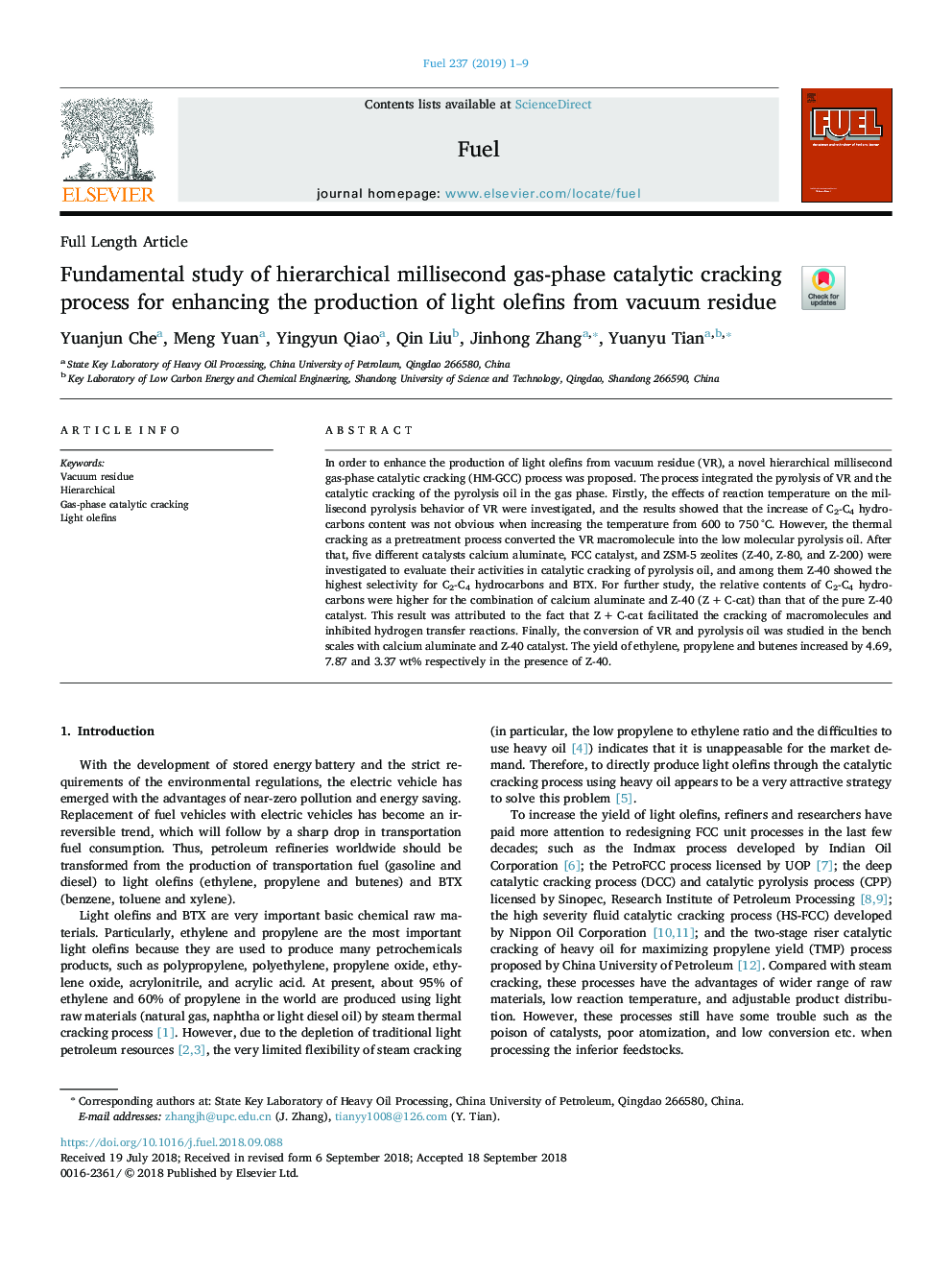| Article ID | Journal | Published Year | Pages | File Type |
|---|---|---|---|---|
| 11016600 | Fuel | 2019 | 9 Pages |
Abstract
In order to enhance the production of light olefins from vacuum residue (VR), a novel hierarchical millisecond gas-phase catalytic cracking (HM-GCC) process was proposed. The process integrated the pyrolysis of VR and the catalytic cracking of the pyrolysis oil in the gas phase. Firstly, the effects of reaction temperature on the millisecond pyrolysis behavior of VR were investigated, and the results showed that the increase of C2-C4 hydrocarbons content was not obvious when increasing the temperature from 600 to 750â¯Â°C. However, the thermal cracking as a pretreatment process converted the VR macromolecule into the low molecular pyrolysis oil. After that, five different catalysts calcium aluminate, FCC catalyst, and ZSM-5 zeolites (Z-40, Z-80, and Z-200) were investigated to evaluate their activities in catalytic cracking of pyrolysis oil, and among them Z-40 showed the highest selectivity for C2-C4 hydrocarbons and BTX. For further study, the relative contents of C2-C4 hydrocarbons were higher for the combination of calcium aluminate and Z-40 (Zâ¯+â¯C-cat) than that of the pure Z-40 catalyst. This result was attributed to the fact that Zâ¯+â¯C-cat facilitated the cracking of macromolecules and inhibited hydrogen transfer reactions. Finally, the conversion of VR and pyrolysis oil was studied in the bench scales with calcium aluminate and Z-40 catalyst. The yield of ethylene, propylene and butenes increased by 4.69, 7.87 and 3.37â¯wt% respectively in the presence of Z-40.
Related Topics
Physical Sciences and Engineering
Chemical Engineering
Chemical Engineering (General)
Authors
Yuanjun Che, Meng Yuan, Yingyun Qiao, Qin Liu, Jinhong Zhang, Yuanyu Tian,
